If you’re looking for a reliable septic tank, you can apply a metal detector to locate it in a quick way. Am average septic tank is considered an important part of any home and should be maintained regularly. If you’re having problems with a septic tank at your household, or if you suspect there may be a problem, applying a metal detector can assist you to find it in a quick and easy way.
Bear in mind – always call a professional if you have any questions or concerns about this issues. They can assist to maintain it properly and ensure that it lasts for years to come.In this blog post, experts will discuss how to recognize and locate a septic tank by means of a poweful metal detector. We will also provide some tips on how to maintain your septic system properly and almost effortlessly!
How to Recognize A Septic Tank?
Well, to be honest, it is nothing that particular. Any septic tank is basically a subterranean watertight container. It may collect partially treated raw sewage. The solid waste remains afloat in the sewage tank, while wastewater moves to the drain field for the appropriate treatmen
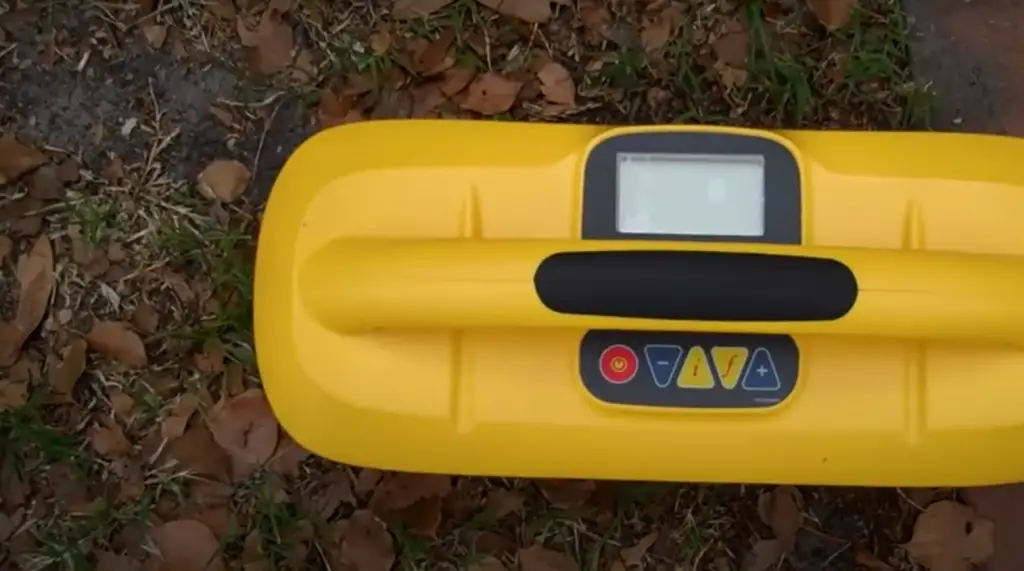
Every home has a standard “gravity” septic tank system. It typically includes a cleanout, the septic tank itself, D-box, and the drain field mechanism.
Typically, the number of bedrooms in your household determines the tank’s size. The average volume for concrete lidded pools is 1600 litres (approx. 420 gallons).
These are the most common septic tanks sizes in the U.S. household [1]:
- 3000 litres (790 gallons) for an average 3-bedroom house;
- 3500 litres (923 gallons) for an average 4-bedroom house;
- 4000 litres (1055 gallons) for an average 5-bedroom house;
Septic tanks are most often circular concrete topped with a large centralized lid. On their sides, you’ll see some small holes. Some have little or huge lids. Others have specialized lids or a square of checker plate fastened to the side.
The septic tank is slightly elevated above the ground to allow for proper drainage.
How Do Standard Septic Systems Operate?
A septic system is typically made up of two components: a septic tank and a drain field [2]. The septic tank is a watertight chamber. Commonly, this chamber is made of concrete, steel, fiberglass, or plastic. It receives all of the wastewater from your home through a network of pipes.
The waste then breaks down in the tank thanks to the natural bacteria present. Once it has broken down, the water then flows out of the tank’s main container straight into the drain field where it is further treated by bacteria.
The most common building materials for septic tanks are:
1) Concrete has been probably the most popular material for household septic tanks since, at least, the 1880s. These tanks have a 40-year lifespan and might crack in regions that experience large temperature swings. Cities with sewer system design standards frequently require only the use of concrete tanks.
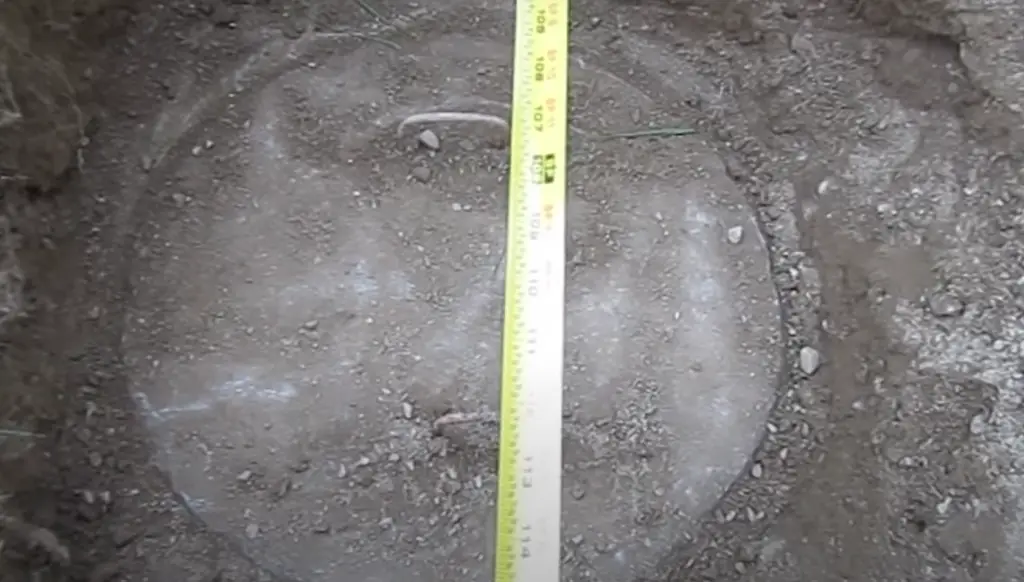
2) Steel used to be a popular material during the 1940s-1970s. And, frequently, it is picked for such systems nowadays. Within 20 to 25 years in most areas, stale septic tanks start to rust. As these tanks corrode, the whole structure begins to deteriorate. If a person/animal inadvertently steps on a rusted tank, it surely may collapse beneath the weight.
3) Plastic septic tanks are applied in the United States since the 1980s. They are lighter and easier to set up than concrete, stale, or fiberglass systems. The main benefit – they won’t rust and they are less prone to fracture than concrete systems.
4) The systems constructed of fiberglass, like concrete tanks. The great benefit – they can survive for around 40 years. They won’t rust or crack unlike metal tanks. Nevertheless, they tend to be pricier to install and more prone to be damaged even during the professional installation.
The septic tank itself is typically buried underground. This is why you will need a metal detector if you want to find it without damaging it when you’re digging.
What May Happen If A Septic Tank is Overfilled?
If a septic tank is too full to function properly, it can lead to a number of problems. The first is that the effluent may start to back up into your home. This can cause sewage to come out of your drains and toilets and can create an unsanitary environment [3].
Additionally, if the tank is not emptied from time to time, the solid waste may eventually make its way into the leach field. This waste may clog the soil and prevent it from working properly, which could lead to even more serious problems.
Therefore, it’s essential to have your tank pumped regularly to avoid these issues.
Reasons To Find Your Septic Tank As Soon As Possible:
- To check if it’s still in a working condition;
- You may require to pump or repair it;
- If you’re selling your home, the new owner will surely ask where your septic tank is located;
There are many reasons why you might want to locate your septic tank. Maybe you’re planning on selling your property and require the septic system to be inspected.
Perhaps you’re experiencing issues with your system and need to have it repaired or replaced. In any case, being able to locate your septic tank can save you a lot of time and money.
The Most Common Locations to Find Septic Tanks:
- By the side of the house;
- In the front or back yard;
- Near the water meter or main shutoff valve for the house;
- Sometimes, commercial septic tanks are located in a field away from any buildings;
- Examine any pipe connections between your basement and the outdoors, as well as the crawlspace or exit. The term “building sewer” refers to this pipeline. Your tank system has to be located no less than 10-20 ft in front of the building sewer – that is a common rule;
- Look for any bumps or dips on the surface. They are frequently connected to the lid’s position;
- Avoid going near areas with dense plant cover. Your plants, for example, may obtain nutrients from the drain field nearby;
- Areas with no grass. Examine areas with minimal to no grass development;
The Tools You May Require To Locate a Septic Tank
If you’re lucky enough to have a septic tank, then you already know that these wastewater treatment systems are underground. This is great news for your landscape because it means that you don’t have unsightly above-ground tanks or leach fields ruining the look of your property.
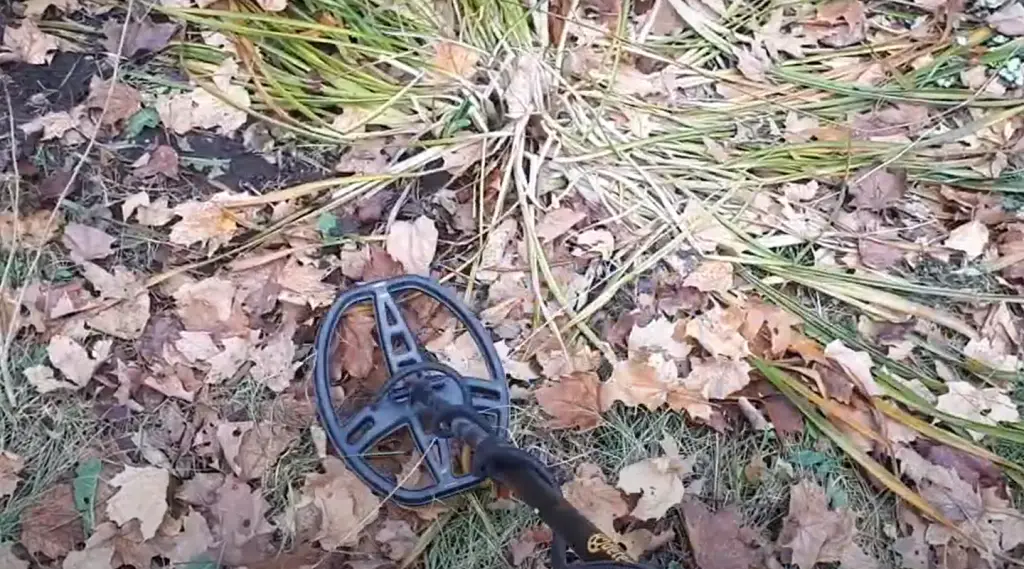
However, this does present a problem when it comes time to service or repair your septic system. After all, how can you find something that’s buried deep beneath the ground?
These devices are designed to locate metal objects underground, which makes them the perfect tool for finding a septic tank.You will require such tools [4]:
- Metal detector. Have one with a huge coil for thorough searches. Several users have claimed to find their tanks by means of a detector like the Bounty Hunter Tracker IV, which sells for less than $100 and can be found in any specialized store;
- A tile probe stands for metal object that you’ll drive onto the ground to discover the hidden sewage lid. It is one of the quickest methods;
- A plumbing cleanout snake is a long, versatile wire that will unclog any drain;
- Septic riser goes on the tank so you can access it quickly for pumping and repairs;
- Disposable gloves are for keeping your hands clean and free of blisters while working;
- Tape measure. You’ll use these to determine how far away your tank is from your house, usually between 5 and 20 ft.;
- Shovel. After you’ve found your tank’s entrance, you’ll use the shovel to dig up the earth;
- Hand sanitizer. Before and especially after this dirty job, you should clean your hands thoroughly. It’s not a good idea to carry the filth from a septic tank with you.;
- A cordless drill is designed to remove screws from the tank’s lids.
- A screwdriver is also required to remove nasty lid bolts;
- You can put a pry bar in your bag if you want to check the contents;
Major Steps To Find A Household Septic Tank
Find the Main Drain Line of Your House Sewer System
This is the pipe that connects your house to the septic tank. It is usually located in the front yard near the street.
If you cannot locate your main sewer drain line, you can try finding your septic tank by following these steps:
- Look for a manhole cover in your yard. The main sewer drain line will connect to the septic tank via this manhole;
- If you cannot find a manhole, look for a cleanout plug. This small cap is necessary to clean out the main drain line;
- Once you have located either the manhole or cleanout plug, use a tape measure to determine how far away it is from your home’s foundation;
Check Necessary Permits Along with Public Records:
- Once you have located your main sewer drain line, the next step is to check for permits and public records;
- You can do this by searching your address on your city or county’s website;
- This will give you access to any permits that have been filed for work on your property, including the installation of a septic tank;
- Public records can also be helpful in determining the location of your septic tank;
- For example, if you know when your home was built, you can search for building permit records from that time period;
Contact the local health department for specific information about the septic tank’s location. They will keep track of septic tank installations in your area.
Determine the Material Type of Your Tank System:
- This is important because it will affectthe metal detector model you should pick;
- The most common material for modern septic tanks is concrete. However, as it has been said before, it can be made with different materials, including plastic and steel;
- If you are not sure what material your septic tank is made of, you can contact a professional who will be able to help you identify it;
If It’s Made of Concrete Or Steel, Consider Using an Effective Metal Detector
- The first step is to identify the type of metal detector you require;
- For concrete tanks, you may need a pulse induction metal detector;
- For stale tanks, you will require a very low frequency (VLF) metal detector;
- Once you have the right type of metal detector, sweep it back and forth over the area where you think your septic tank is located;
- The metal detector should beep when it meets the septic tank;
- You can then use a shovel to dig up the septic tank;
If It’s Made of Plastic Or Fiberglass, You Should Probe Gently With a Rod
- Gently probe the ground in the area where you think the septic tank is located;
- The rod will hit the septic tank when it meets it;
- You can then use a shovel to dig up the septic tank;
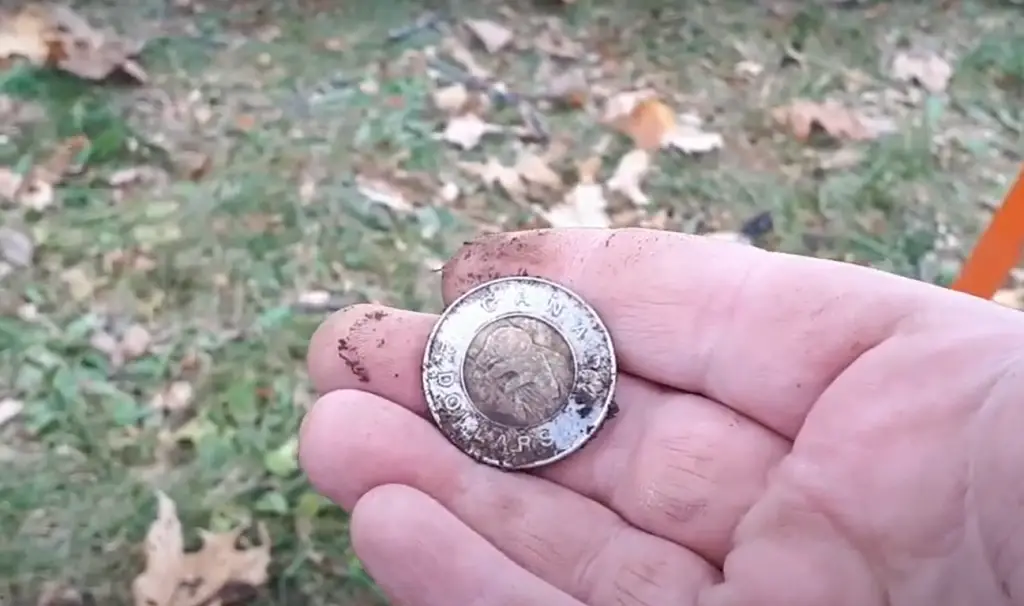
Once you have found your septic tank, you can then begin the process of cleaning it out. This is an important task that should be done on a regular basis to prevent problems with your septic system.
How To Use A Metal Detector To Search For A Septic Tank?
If you’re looking for a septic tank on your property, metal detectors can be a helpful tool in your search. Septic tanks are typically made of concrete, metal, or plastic, and they’re buried underground. Metal detectors can help you locate them by picking up on the metal components.
Here’s how to use a metal detector to search for a septic tank:
- Start by scanning the area where the septic tank is thought to be located. Slowly move the detector back and forth until you hear a beeping sound. This indicates that there’s metal in the ground;
- When you hear the beeping, stop and dig a small hole at that spot. Use a shovel or other digging tool to carefully excavate the area until you find the septic tank;
- If you don’t hear a beeping sound, try moving the detector around in different directions until you do. It may take some trial and error to locate the septic tank, but metal detectors can be a helpful tool in your search;
What To Do After Locating Your Septic Tank?
You can mark the location on your home’s map. Take a photo of the location and store it somewhere safe such as Google Drive [5].
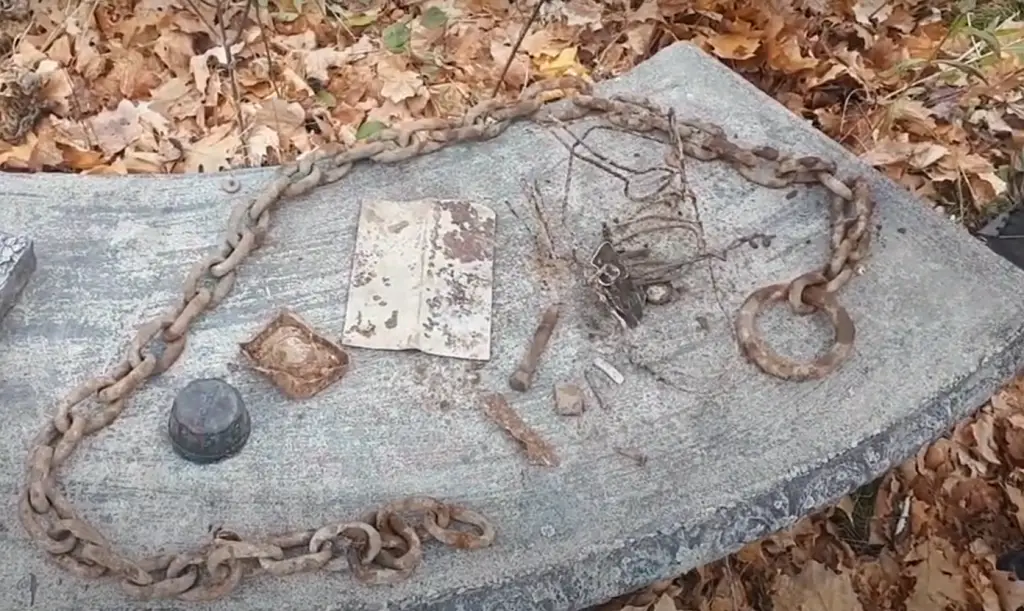
FAQ
Where are most septic tanks located?
Most septic tanks are located in rural areas where there is no central sewer system. However, some septic tanks can be found in urban areas as well.
Your septic tank will most likely be built along the main sewage line that runs out of your property. Look for a 4-inch sewer that leaves the crawl space or basement and finds its way outside the home. Septic tanks are generally positioned between ten and 25 feet away from the house.
If you live in an area with a central sewer system, it is unlikely that you have a septic tank. However, if you live in a rural area or your home was built before the central sewer system was installed, there is a good chance that you have a septic tank [6].
How do you put in a septic tank probe?
Drive the septic tank probe into the ground at a 45-degree angle until the T-handle is level with the ground. The depth of the septic tank will be indicated by the number of feet that are driven into the ground.
Follow the pipe with a thin metal probe (also known as a soil probe) inserted into the ground near the sewage line.
Probe about every 2 feet.
The majority of septic tanks are approximately 10-25 feet from your home and may not be any closer than 5 feet away [7].
Can you dig around a septic tank?
Yes, you can dig around a septic tank, but it is best to hire a professional to do this for you. A professional will know how to properly locate and excavate the septic tank without damaging it.
If you must dig around the septic tank yourself, be very careful not to damage the tank or its components. The last thing you want is for your septic system to fail because you damaged the septic tank while trying to find it.
How much does a septic tank cost?
The average cost of installing a new septic tank system is $3,900. A typical 1,250-gallon tank costs between $1,500 and $5,000, which is ideal for a three- or four-bedroom house. This fee covers the tank as well as other related expenditures such as pump repairs and material replenishment [8].
What floats on top of the septic tank?
The septic tank has a layer of scum on the surface that is made up of grease, oil, and other light solids. The scum layer floats on top of the water in the septic tank and acts as a barrier between the sewage and the air.
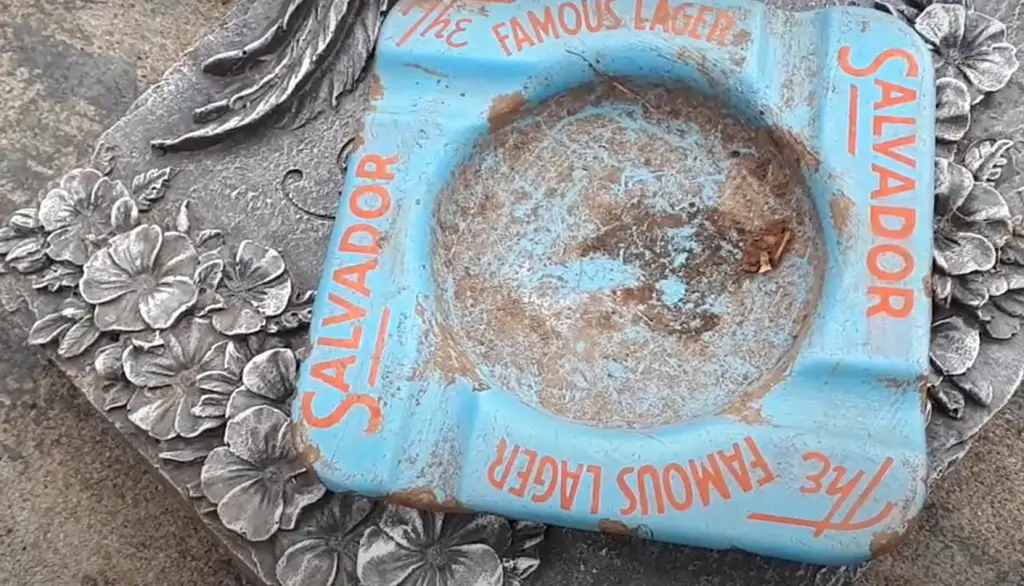
The septic tank also has a layer of sludge at the bottom that is made up of heavy solids such as sand, grit, and cinders. The sludge does not float because it is heavier than water.
What size pipe goes from house to septic tank?
The four-inch pipe is usually standard, and it should reach far enough below the home to connect with the main soil stack, which is a 3-inch pipe that extends vertically up through the roof [9].
What is a tee in a septic tank?
A baffle or tee is a device on the inlet or outlet of a septic tank that prevents sewage back-flow into the inlet or outlet pipe. It also helps to settle out solids and scum in the septic tank.
The baffle or tee is a Y-shaped device that is installed in the inlet or outlet pipe of the septic tank. The baffle redirects sewage flow down into the main chamber of the septic tank and prevents sewage backflow [10].
Useful Video: Metal Detecting A Farm House | How To Find a Septic Tank Lid
References:
- https://pinpointdetectors.com/finding-septic-tank-with-metal-detector/
- https://metrometaldetectors.com/blogs/blog/how-to-find-a-septic-tank-with-a-metal-detector
- https://metaldetectingplanet.com/how-to-find-a-septic-tank-with-a-metal-detector/
- https://pinpointdetectors.com/finding-septic-tank-with-metal-detector/
- https://pinpointdetectors.com/finding-septic-tank-with-metal-detector/
- https://parobekplumbing.com/plumbing-tips/how-to-find-your-septic-tank/
- https://allamericansepticpumping.com/septic-services-san-diego/septic-locating/
- https://www.bobvila.com/articles/septic-tank-cost/
- https://homeguides.sfgate.com/run-septic-tank-line-house-102795.html
- https://inspectapedia.com/septic/Septic_Tank_Tees.php





